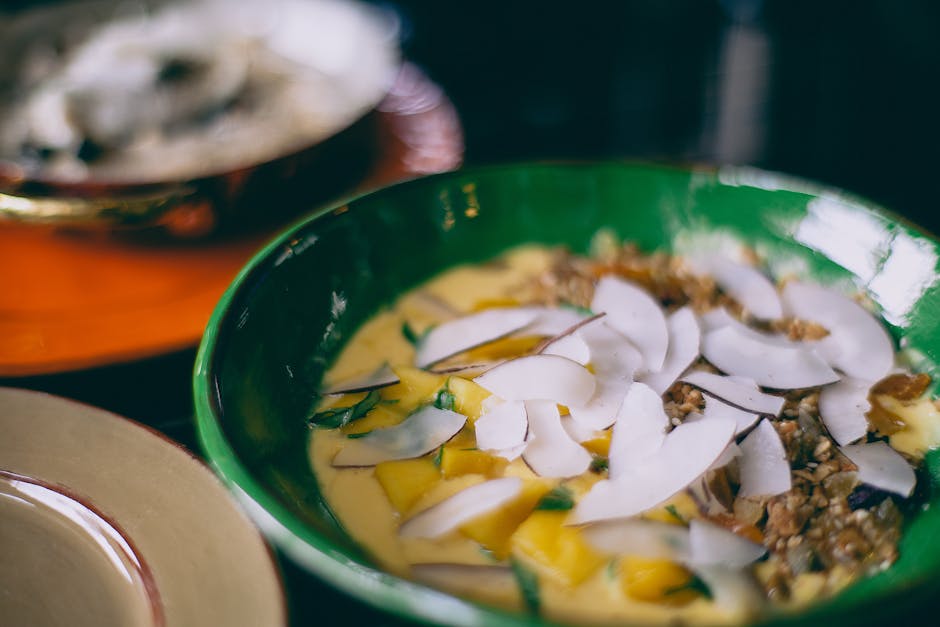Prepare your taste buds for an unforgettable culinary journey into the heart of Vietnam with the best Goi Cuon, also known as Vietnamese fresh spring rolls. More than just a delicious appetizer, Goi Cuon holds a significant place in Vietnamese cuisine and culture, reflecting a history as rich and layered as its flavor profile. Originating in the northern regions of Vietnam, these delicate rolls have evolved over centuries, adapting to regional variations while retaining their core essence: a harmonious blend of fresh, vibrant ingredients wrapped in soft rice paper.
The exact origins of Goi Cuon are difficult to pinpoint with certainty, lost in the mists of time and evolving culinary traditions. However, its development is intrinsically linked to the abundance of fresh produce readily available in the Mekong Delta and the northern rice paddies. The use of rice paper, a staple in Vietnamese cooking, suggests a history dating back centuries, perhaps even to pre-colonial times. The simplicity of the ingredients – fresh herbs, vermicelli noodles, and protein – points to a dish that was likely born from necessity, utilizing readily accessible ingredients in a creative and delicious way. Over time, regional variations emerged, with some versions incorporating shrimp or pork, while others remain strictly vegetarian.
Goi Cuon’s cultural significance extends far beyond its deliciousness. It’s frequently served at family gatherings, celebrations, and special occasions, symbolizing community and togetherness. The act of preparing Goi Cuon itself is often a social affair, with family and friends working together to assemble the rolls, creating a shared experience that strengthens bonds. Its popularity is undeniable; statistics show it’s one of the most popular dishes in Vietnamese restaurants globally, with estimates suggesting it accounts for a significant percentage of appetizer orders. Beyond its domestic popularity, Goi Cuon has also gained immense international recognition, becoming a staple on menus in many countries worldwide, introducing countless people to the vibrant flavors of Vietnamese cuisine.
More than just a dish, Goi Cuon represents a culinary philosophy that emphasizes freshness, balance, and the skillful combination of simple ingredients. The delicate interplay of textures – the crisp vegetables, the soft rice paper, and the chewy noodles – along with the harmonious blend of sweet, sour, and savory flavors, makes it a truly unforgettable culinary experience. From its humble beginnings as a practical dish born from readily available resources, Goi Cuon has evolved into a globally recognized culinary icon, a testament to the enduring appeal of Vietnamese gastronomy and the power of simple, fresh ingredients.
Ingredients and Measurements for the Best Vietnamese Goi Cuon
Creating authentic and delicious Goi Cuon (Vietnamese fresh spring rolls) hinges on using fresh, high-quality ingredients and precise measurements. The following list details everything you’ll need, with specific quantities tailored for approximately 12-15 rolls, depending on size.
Rice Paper Wrappers: You’ll need approximately 15-20 large rice paper wrappers (around 8-9 inches in diameter). Choose wrappers that are thin and pliable; thicker wrappers can be more difficult to work with and may result in tougher rolls. Look for brands specifically marketed for Goi Cuon. Store them in an airtight container in a cool, dry place to prevent them from drying out.
Vermicelli Rice Noodles: Use 8 ounces (225 grams) of dried vermicelli rice noodles. Cook these according to package directions, ensuring they’re cooked al dente and not mushy. Rinse thoroughly under cold water to prevent sticking and to cool them down quickly. Once cooled, gently separate the noodles to prevent clumping. Avoid overcooking, as this will make the noodles gummy and unpleasant in the rolls.
Lettuce: Use approximately 4 cups of loosely packed fresh lettuce. Butter lettuce or Bibb lettuce are ideal choices due to their tender leaves and mild flavor. Wash and thoroughly dry the lettuce leaves before shredding or tearing them into bite-sized pieces. Avoid using overly strong-flavored lettuces that might overpower the other delicate flavors.
Fresh Herbs: Fresh herbs are crucial for the authentic taste of Goi Cuon. Aim for about 2 cups of a combination of the following: 1 cup of fresh mint leaves, 1 cup of fresh cilantro leaves, and ½ cup of fresh Thai basil leaves. Wash and dry the herbs thoroughly, and then roughly chop them. The variety of herbs adds a complex and refreshing flavor profile.
Other Vegetables: Prepare approximately 2 cups of julienned vegetables. This could include carrots (1 medium carrot), cucumber (½ medium cucumber), and red bell pepper (½ medium red bell pepper). Julienne the vegetables into thin, matchstick-like pieces for optimal texture and ease of rolling. Ensure all vegetables are crisp and fresh.
Protein: Choose your preferred protein! Popular options include cooked shrimp (about 1 cup cooked and peeled shrimp), cooked pork (about 1 cup thinly sliced cooked pork), or tofu (about 1 cup firm tofu, pressed and cut into thin strips). Ensure your protein is cooked thoroughly and cooled before adding it to the rolls. You can adjust the amount of protein based on your preference and the number of rolls you’re making.
Peanut Sauce (optional but highly recommended): The peanut sauce is what elevates Goi Cuon to the next level. You can find various recipes online, but ensure you have the key ingredients: peanut butter, soy sauce, lime juice, rice vinegar, water, and sugar. Adjust the sauce to your taste preference – some prefer it sweeter, while others prefer it more savory and tangy.
Important Note: Prepare all your ingredients in advance, neatly arranging them in separate bowls for easy assembly. This will make the rolling process much smoother and more efficient. Having everything ready to go will prevent frustration and ensure the rolls are made quickly while the rice paper is still pliable.
Preparation of Ingredients
The success of your Goi Cuon (Vietnamese fresh spring rolls) hinges on the quality and preparation of your ingredients. Careful attention to detail in this stage will ensure perfectly balanced and delicious rolls.
Rice Paper Soaking: Begin by preparing your rice paper wrappers. The key is to soften them just enough to become pliable without becoming overly soggy and tearing. For a typical batch of rolls (about 20), you’ll need approximately 20-25 rice paper wrappers, depending on their size. Fill a shallow, wide dish (a large, flat-bottomed plate works well) with lukewarm water. Do not use hot water, as this will cause the rice paper to become too soft and sticky. Submerge one rice paper wrapper at a time for approximately 5-10 seconds. The exact time will depend on the thickness of the paper and the temperature of the water; you’ll need to test it out. Remove the wrapper and gently lay it flat on a clean, damp kitchen towel. This prevents sticking and allows excess water to drain, resulting in a wrapper that’s supple but not overly wet. Work quickly, preparing only a few wrappers at a time to ensure optimal texture.
Vermicelli Preparation: For a batch of 20 rolls, you’ll need approximately 8 ounces (225g) of dried vermicelli rice noodles. Bring a pot of salted water to a rolling boil. Add the vermicelli noodles and cook according to package directions, usually around 5-7 minutes. They should be tender but still have a slight bite. Once cooked, immediately drain the noodles in a colander and rinse under cold water to stop the cooking process and prevent them from sticking together. To further prevent sticking, toss the noodles with a small amount of neutral oil (like vegetable or canola oil). This will also add a slight sheen and prevent them from drying out.
Herb Cleaning: Fresh herbs are essential for authentic Goi Cuon. Common choices include mint, cilantro, lettuce (butter lettuce or romaine), and perilla leaves. For 20 rolls, aim for approximately 1 cup of each herb, packed. Thoroughly wash all herbs under cold running water to remove any dirt or pesticides. Gently separate the leaves and inspect them for any wilted or damaged ones. Remove any stems or tough parts. Pat the herbs dry using a clean kitchen towel or salad spinner; damp herbs will make the rolls soggy. If using lettuce, separate the leaves and cut them into manageable strips, roughly 3-4 inches long. For mint and cilantro, you can leave them whole or roughly chop them, depending on your preference. For perilla, use whole leaves.
Other Ingredients: Remember to prepare all other ingredients beforehand, such as cooked shrimp, pork, tofu (if using), and any other fillings you’ve chosen. Ensure they are all cut into uniform, bite-sized pieces for easy rolling. Having everything prepped and ready to go will streamline the rolling process and ensure a smooth and efficient cooking experience.
Filling Assembly and Rolling Techniques
Mastering the art of Goi Cuon assembly is key to creating perfect, elegant rolls. This section will guide you through the process, from preparing your fillings to achieving that tight, beautiful roll. Remember, practice makes perfect! Don’t be discouraged if your first few attempts aren’t picture-perfect.
Preparing your Filling: Before you start rolling, ensure all your ingredients are properly prepared. Vermicelli noodles should be cooked according to package directions, then rinsed thoroughly under cold water to prevent sticking and to cool them down. Herbs should be washed and neatly stacked, ready for easy picking. Shrimp, pork, or tofu should be cooked and cooled completely. Cut all ingredients into thin, manageable strips or pieces – approximately 2-3 inches long for optimal rolling. This consistency ensures even distribution of fillings and a pleasant bite.
The Filling Ratio: The ideal Goi Cuon filling is a balance of textures and flavors. We recommend a ratio that emphasizes freshness and lightness. A good starting point is: 2-3 shrimp or equivalent protein, a handful of vermicelli noodles (about 2 tablespoons), 2-3 types of herbs (mint, cilantro, lettuce – about 1/4 cup total), and a few pieces of fresh vegetables like shredded carrots or cucumber (about 1 tablespoon). Adjust the quantities to your preference, but avoid overfilling, as this makes the rolls difficult to roll and can cause them to burst.
The Rolling Technique: Lay a rice paper wrapper on a clean, damp surface (a slightly damp kitchen towel works perfectly). Allow it to soften for about 15-20 seconds, just until pliable. Do not soak it for too long, as this will make it too fragile. Arrange your filling in a neat line across the center of the wrapper, leaving about an inch of space on each side. The filling should be slightly below the center to allow for proper folding.
Folding and Tightening: Using your fingers, carefully fold the bottom edge of the wrapper over the filling. Then, fold in the sides, tucking them tightly against the filling. Use gentle pressure to avoid tearing the wrapper. Continue rolling tightly, pressing gently as you go. The final roll should be firm and compact, with a neat, cylindrical shape. A slightly damp fingertip can help seal any gaps and keep the roll from unraveling.
Professional Tip: For extra-tight rolls, use a slightly smaller amount of filling initially. As you gain experience, you can gradually increase the quantity to your liking. Practice makes perfect in Goi Cuon rolling, and soon you’ll be able to create beautiful, consistently shaped rolls every time. You can also use a bamboo rolling mat for more control and consistent tightness.
Serving Suggestion: Once rolled, arrange your Goi Cuon on a platter and serve immediately with your favorite dipping sauce (peanut sauce, hoisin, or nuoc cham are all excellent choices). Garnish with fresh herbs and a sprinkle of toasted sesame seeds for an extra touch of elegance. Enjoy!
Dipping Sauce Preparation
The dipping sauce, or nước chấm, is just as crucial to the Goi Cuon experience as the rolls themselves. A perfectly balanced sauce elevates the fresh flavors of the herbs and shrimp, creating a truly unforgettable culinary journey. This recipe focuses on a classic peanut-based sauce, easily adaptable to your taste preferences.
Yields: Approximately 1 ½ cupsPrep time: 10 minutes
Ingredients:
- ½ cup creamy peanut butter (natural peanut butter is recommended for a richer flavor and smoother texture, but make sure to stir it well before measuring)
- ¼ cup fish sauce (adjust to your preference; start with less and add more to taste)
- 2 tablespoons rice vinegar (white rice vinegar is preferred for its neutral flavor)
- 2 tablespoons lime juice (freshly squeezed is best)
- 2 tablespoons water (or more, to adjust consistency)
- 1 tablespoon brown sugar (or to taste; adjust based on the sweetness of your peanut butter)
- 1 small clove garlic, minced (more if you prefer a stronger garlic flavor)
- 1-2 Thai chili peppers, finely minced (adjust to your spice preference; remove seeds for less heat)
- 1 tablespoon chopped fresh cilantro (optional, for added freshness and aroma)
Instructions:
1. Combining Ingredients: In a medium bowl, whisk together the peanut butter, fish sauce, rice vinegar, lime juice, water, brown sugar, minced garlic, and chili peppers until completely smooth and well combined. Be sure to whisk vigorously to prevent lumps, especially with natural peanut butter.
2. Adjusting Consistency and Flavor: Taste the sauce and adjust the seasonings as needed. If it’s too thick, add more water, a teaspoon at a time, until you reach your desired consistency. If it’s too sweet, add a touch more lime juice or rice vinegar. If it needs more saltiness, add a little more fish sauce. Remember, taste is subjective, so feel free to experiment!
3. Adding Fresh Cilantro (Optional): Stir in the chopped fresh cilantro, if using. This adds a vibrant green color and fresh herbaceous note.
4. Resting the Sauce: For the best flavor, cover the bowl and let the sauce rest in the refrigerator for at least 30 minutes before serving. This allows the flavors to meld together and deepen. The longer it sits, the more delicious it becomes!
5. Serving Suggestion: Serve the dipping sauce in a small bowl alongside your freshly prepared Goi Cuon. Consider garnishing the sauce with a sprinkle of chopped peanuts or a few extra chili flakes for an extra touch of visual appeal and flavor.
Professional Recommendation: For a truly authentic flavor, use high-quality ingredients. Freshly squeezed lime juice and good-quality fish sauce make a significant difference. Don’t be afraid to experiment with different chili peppers to find your perfect level of spice.
Serving Suggestions and Garnishes
Your perfectly crafted Goi Cuon (Vietnamese Fresh Spring Rolls) deserve a presentation as elegant as their taste. Serving them correctly enhances the overall dining experience, allowing the delicate flavors to shine. Here are some serving suggestions and garnish ideas to elevate your Goi Cuon to the next level.
Serving Temperature: Goi Cuon are best served immediately after preparation. This ensures the rice paper remains pliable and the fresh ingredients retain their optimal crispness and vibrant colors. Avoid refrigerating them for extended periods, as this can cause the rice paper to become soggy and the vegetables to lose their freshness.
Plating: A simple yet elegant presentation is key. Arrange the Goi Cuon attractively on a large platter or individual plates. Consider using a bed of fresh lettuce leaves or a vibrant green herb like cilantro to create a visually appealing base. Avoid overcrowding the platter; allow space between the rolls for easy picking.
Dipping Sauces: No Goi Cuon is complete without a delicious dipping sauce. A classic choice is the Nuoc Cham (Vietnamese dipping sauce), a blend of fish sauce, lime juice, sugar, garlic, and chili. For a smoother consistency, you can blend the sauce until it’s emulsified. A good ratio is approximately 1/4 cup fish sauce, 2 tablespoons lime juice, 1 tablespoon sugar, 1 minced garlic clove, and 1-2 finely chopped chilies (adjust to your spice preference). Prepare the Nuoc Cham sauce beforehand to allow the flavors to meld.
Garnish Options: Garnishes add visual appeal and enhance the flavor profile of your Goi Cuon. Consider these options:
- Fresh Herbs: A scattering of fresh cilantro, mint, and Thai basil adds a burst of freshness and aroma. Use approximately 1 tablespoon of chopped herbs per serving of 4-6 rolls.
- Roasted Peanuts: Crushed roasted peanuts provide a delightful crunch and nutty flavor. Lightly toast 1/4 cup of peanuts until fragrant and then coarsely crush them. Sprinkle generously over the Goi Cuon.
- Lime Wedges: A simple yet effective garnish, lime wedges allow guests to add extra citrusy zing to their dipping sauce or directly to the rolls. Provide at least one wedge per person.
- Chili Flakes: For those who prefer extra heat, a small bowl of chili flakes provides an option to increase the spiciness according to individual preference. Use sparingly, as the Nuoc Cham sauce already contains chili.
- Sesame Seeds: Toasted sesame seeds add a subtle nutty flavor and visual texture. Lightly toast 1 tablespoon of sesame seeds and sprinkle over the rolls.
Serving Suggestions for Larger Gatherings: For buffets or larger gatherings, consider setting up a Goi Cuon station. This allows guests to assemble their own rolls, choosing their preferred ingredients and customizing their dipping sauce. Provide clear labels for all ingredients and sauces, ensuring a visually appealing and organized presentation. Ensure you have enough rice paper, ingredients, and dipping sauces for all your guests.
Remember: The key to a successful Goi Cuon presentation is simplicity and freshness. Let the natural beauty of the ingredients shine through with a thoughtful and elegant arrangement.
Tips for Perfect Rolls
Creating beautiful and tightly-packed Goi Cuon (Vietnamese fresh spring rolls) takes practice, but with a few key techniques, you can master the art of rolling like a pro. This section will guide you through essential tips to prevent rice paper tearing and achieve those perfectly cylindrical rolls.
Preventing Rice Paper Tears: The Key is Hydration. The most common problem encountered is rice paper tearing. This usually happens because the rice paper isn’t properly softened. Never try to roll dry rice paper! Instead, briefly dip each sheet (one at a time) into a shallow dish of warm water (around 100-110°F or 38-43°C). Don’t submerge it completely; just dip it for 5-10 seconds, or until it softens and becomes pliable. Too long, and it becomes overly soggy and prone to tearing. Immediately lay the softened sheet on a clean, damp kitchen towel or a silicone mat. This prevents sticking and provides a stable surface for assembling your ingredients.
Working Quickly is Crucial. Once the rice paper is softened, you need to work quickly. The rice paper will begin to dry out again, making it more fragile. Have all your ingredients prepped and ready to go before you start softening the rice paper. This includes finely chopped vegetables, cooked protein (shrimp, pork, tofu), herbs (mint, cilantro, basil), and vermicelli noodles (cooked and drained). Having everything measured and organized will streamline the process and prevent delays.
Strategic Ingredient Placement: The Foundation for Tight Rolls. The arrangement of your fillings significantly impacts the tightness of your roll. Start with a small mound of ingredients, roughly 1/4 cup to 1/3 cup, in the center of the softened rice paper, about 2 inches from the bottom edge. Avoid overfilling. Overfilling will lead to bursting rolls and difficulty sealing. A good strategy is to create a neat, even layer of ingredients, rather than a haphazard pile.
The Rolling Technique: A Step-by-Step Guide. Begin by folding the bottom edge of the rice paper over the filling. Then, fold in the sides, tucking them neatly over the filling. Use your thumbs and forefingers to gently guide the roll, ensuring the filling remains contained within the rice paper. Finally, tightly roll the Goi Cuon away from you, pressing gently but firmly to create a compact cylinder. Don’t be afraid to use a little pressure – this helps the rice paper adhere and prevents unraveling.
Troubleshooting: Addressing Common Issues. If your rice paper still tears, try using a slightly warmer water temperature (but not too hot!). If the rolls are loose, you may have overfilled them. Practice makes perfect; don’t be discouraged if your first few attempts aren’t flawless. With a little patience and attention to these tips, you’ll be creating picture-perfect Goi Cuon in no time.
Professional Recommendation: Invest in good quality rice paper. Thicker sheets are less likely to tear. Also, consider using a slightly damp kitchen towel or bamboo rolling mat for a more stable rolling surface.
Best Vietnamese Goi Cuon Recommendations
Our Best Vietnamese Goi Cuon are fresh, flavorful, and perfect for a light lunch, appetizer, or a vibrant addition to any meal. To ensure you enjoy them at their absolute best, we offer the following recommendations:
Serving Suggestions: These Goi Cuon are best served immediately after preparation for optimal freshness and texture. For a truly authentic experience, arrange them attractively on a platter, garnished with fresh herbs like cilantro and mint. A small bowl of our signature peanut sauce (recipe available on our website) is essential for dipping. You can also offer a side of hoisin sauce for those who prefer a sweeter and tangier option. Consider serving them alongside other Vietnamese appetizers like Gỏi cuốn tôm thịt (shrimp and pork spring rolls) or Nem rán (fried spring rolls) for a complete tasting experience.
Storage Conditions: For best results, consume our Goi Cuon within 2 hours of preparation. If you need to store them for a short period (no longer than 2 hours), place them in an airtight container in the refrigerator. However, note that the rice paper wrappers may become slightly soggy after refrigeration, impacting the overall texture. Do not freeze our Goi Cuon, as this will significantly affect the quality and taste.
Complementary Dishes: Our Best Vietnamese Goi Cuon pair beautifully with a variety of dishes. They make an excellent starter for a larger Vietnamese meal, complementing richer dishes like Phở (beef noodle soup) or Cơm tấm (broken rice). They also work wonderfully as part of a larger spread of appetizers, alongside dishes like fresh spring rolls, summer rolls, and various Vietnamese salads. For a complete meal, consider serving them with grilled lemongrass chicken or pork, which provides a savory contrast to the freshness of the Goi Cuon.
Nutritional Information (per serving, approximate): The nutritional content will vary slightly depending on the specific ingredients used. However, a typical serving of our Best Vietnamese Goi Cuon contains approximately 150-200 calories. They are a good source of fiber from the rice paper wrappers and vegetables. They also provide a moderate amount of protein from the shrimp, pork, or tofu filling (depending on the variant). The specific breakdown of carbohydrates, fats, and proteins will be available upon request. Please note that this information is an estimate and may vary based on ingredient choices and portion sizes.
Important Note: Our Goi Cuon are made with fresh ingredients. Please inform us of any allergies or dietary restrictions you may have. We are committed to providing a delicious and safe dining experience for everyone. We use only the highest quality ingredients to ensure our Goi Cuon are both flavorful and healthy.





